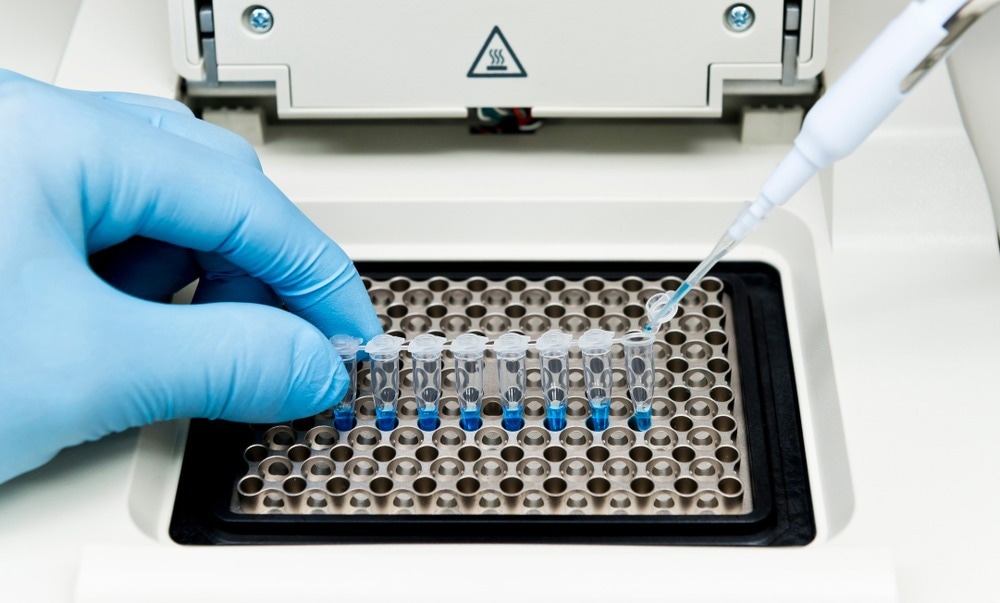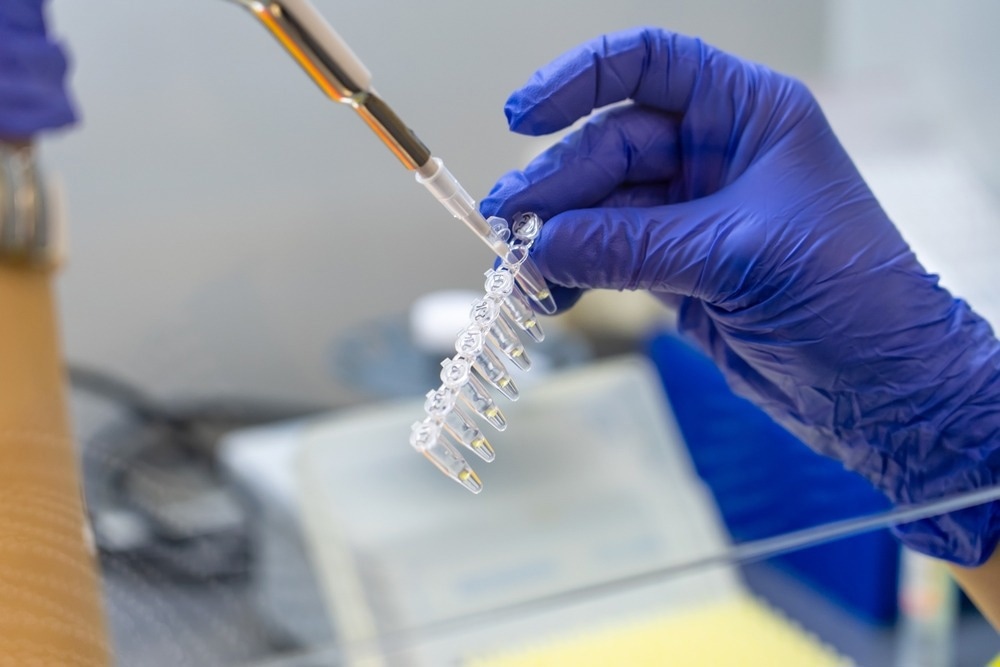In this article, we define site-directed mutagenesis, exploring how it works, its use in research as well as its applications in the broader life sciences industry.

Image Credit: unoL/Shutterstock.com
An Introduction to Site-Directed Mutagenesis (SDM)
Understanding genetic mutations is critical for biological research as a key driver of genetic diseases to target these more effectively with advanced treatment for better disease management while also preventing treatment resistance.
Site-directed mutagenesis is one of the most significant molecular biology techniques. It is commonly used to investigate the structure and function of nucleic acids and proteins, as well as mechanisms underlying genetic diseases and the impact of changes to the genome.
While other non-site-directed mutagenesis methods can also be used to analyze genetic mutations, including point substitutions, deletions and insertions, site-directed mutagenesis through polymerase chain reaction (PCR) is a powerful strategy for investigating these in vitro.
Site-directed mutagenesis can be used to introduce genetic mutations into DNA to facilitate the investigation of downstream impact on its structure and functionality.
Site-directed mutagenesis was developed by Michael Smith, an English researcher who worked in the United States on the synthesis of ribo-oligonucleotides, followed by formulating a method to synthesize deoxyribo-oligonucleotides up to 12-13 nucleotides in length.
His studies on the sequencing and site-directed mutagenesis of the Escherichia coli phage ϕX174 showed how transversion mutations and single nucleotide deletions can be produced with very short oligonucleotides. Smith was awarded one-half of the 1993 Nobel Prize in Chemistry, “for his fundamental contributions to the establishment of oligonucleotide-based, site-directed mutagenesis and its development for protein studies”.
How Does Site-Directed Mutagenesis Work?
Mutagenesis is a molecular biology technique that can be used to produce mutant genes, proteins and organisms. There are two main mutagenesis methods, including site-directed mutagenesis and random-and-extensive mutagenesis (REM), which are primarily accomplished through polymerase chain reaction (PCR) and non-PCR. This article will focus on site-directed mutagenesis.
Site-directed mutagenesis includes the modification of DNA at specific nucleotide locations, producing a predetermined change in amino acid. This type of substitution mutation can lead to significant changes in protein conformation and function.
The site-directed mutagenesis technique requires a DNA template with a target gene, an understanding of the target gene’s nucleotide sequence, and a short primer, typically 20-30 base pairs in length, complementary to the target sequence. The short primer is prepared with a genetic alteration, such as a mismatched nucleotide, which is usually 1-3 base pairs to produce a change in the amino acid.
In vitro synthesis with both PCR and non-PCR techniques for site-directed mutagenesis has four main elements: a DNA template, altered primers (as already mentioned), deoxyribonucleic nucleoside triphosphates and DNA polymerase.
Site-Directed Mutagenesis Procedure and Methodology
The general process for site-directed mutagenesis can be split between three separate steps. Step one of site-directed mutagenesis includes separating the two DNA template strands, which can be achieved by using heat or an alkali solution.
Step two involves the addition of the altered DNA primer, and once this is bound with a single strand, DNA polymerase is used to replicate the strand. The DNA polymerase that is used can be either thermostable or thermolabile.
Step three includes the second round of replication, which produces a mutant DNA strand that can be utilized for creating an altered protein in site-directed mutagenesis.
The PCR technique uses thermostable DNA polymerase enzymes, such as Taq, Pfu, or Vent, as well as at least two different primers. The process also includes multiple heating and cooling cycles, including approximately 30 cycles, with each cycle having three phases: (i) denaturation occurring at ~95 degrees Celsius, (ii) annealing, occurring at ~55 degrees Celsius, and (iii) extension, occurring at ~72 degrees Celsius.
To screen for desired mutants from site-directed mutagenesis, there are different methods available, including DNA sequencing technology such as Sanger sequencing or next-generation sequencing to confirm the desired mutation was introduced. These sequencing techniques can determine the nucleotide sequences and assess accurately the mutations that have been made through site-directed mutagenesis.

Image Credit: sommthink/Shutterstock.com
Applications for Site-Directed Mutagenesis in Research and Industry
Site-directed mutagenesis can be significant for biomedical research into protein engineering, functional genomics and disease modeling. This technique can be used to produce cloned DNA with altered sequences that can be examined more closely for the significance of specific residues in the protein structure and function, which can overall aid in biomedical breakthroughs and advanced genetic solutions.
With genetic disease treatment being a challenge, site-directed mutagenesis may be the rational approach toward protein engineering and modifying enzyme substrate selectivity.
Establishing site-directed mutagenesis has enabled researchers to investigate novel methods to introduce this in their studies, including site-directed mutagenesis of large plasmids based on large DNA fragment amplification and recombinational ligation. Site-directed mutagenesis for large plasmids has been a difficult obstacle for researchers that cannot be overcome with traditional methods.
A group of researchers who have published in Scientific Reports developed an effective strategy for site-directed mutagenesis based on using a PCR approach. They were able to achieve a variety of mutants and concluded their strategy could be used for site-directed mutagenesis for plasmids up to 17.3 kb.
Future Perspectives
Other interesting methods that can achieve mutagenesis include the use of CRISPR/Cas 9 technology, which is derived from bacterial defenses against viruses and foreign plasmids. This tool can be used to stimulate endogenous cell repair mechanisms that can be exploited for biomedical research into modifying DNA for innovative genetic disease therapeutics.
The combination of oligonucleotide recombineering and CRISPR/Cas9 targeting for site-directed mutagenesis of cloned pathways has been developed, with researchers producing 12-point mutations and detecting many determinants of successful mutagenesis. This type of site-directed mutagenesis combination may be significant in order to enhance the process of targeting specific sequences of DNA for research into global diseases that do not yet have a cure.
Conclusion
Site-directed mutagenesis may be significant for advancing life sciences, with this process enabling better characterization and understanding of diseases, including protein diseases and misfolding, which can be associated with a growing list of pathologies.
However, the responsibility of scientists to adhere to strict ethical guidelines when applying site-directed mutagenesis is also critical, with the potential of this technology possibly being misused for changes that are not health-related or required.
Sources
Collins FS, Doudna JA, Lander ES, Rotimi CN. Human molecular genetics and genomics — important advances and exciting possibilities. New England Journal of Medicine. 2021;384(1):1-4. doi:10.1056/nejmp2030694
DeCero SA, Winslow CH, Coburn J. Method to overcome inefficiencies in site-directed mutagenesis of a/T-rich DNA. Journal of Biomolecular Techniques : JBT. Published online 2020. doi:10.7171/jbt.20-3103-003
Durland J, Ahmadian-Moghadam H. Genetics, Mutagenesis. [Updated 2022 Sep 19]. Available from: https://www.ncbi.nlm.nih.gov/books/NBK560519/
Edelheit O, Hanukoglu A, Hanukoglu I. Simple and efficient site-directed mutagenesis using two single-primer reactions in parallel to generate mutants for protein structure-function studies. BMC Biotechnology. 2009;9(1). doi:10.1186/1472-6750-9-61
Hartl FU. Protein misfolding diseases. Annual Review of Biochemistry. 2017;86(1):21-26. doi:10.1146/annurev-biochem-061516-044518
Kresge N, Simoni RD, Hill RL. The development of site-directed mutagenesis by Michael Smith. Journal of Biological Chemistry. 2006;281(39). doi:10.1016/s0021-9258(19)33938-9
Sharma OP. Ethics in science. Indian Journal of Microbiology. 2015;55(3):341-344. doi:10.1007/s12088-015-0532-x
Zhang JJ, Moore BS. Site-directed mutagenesis of large biosynthetic gene clusters via oligonucleotide recombineering and CRISPR/Cas9 targeting. ACS Synthetic Biology. 2020;9(7):1917-1922. doi:10.1021/acssynbio.0c00265
Zhang K, Yin X, Shi K, et al. A high-efficiency method for site-directed mutagenesis of large plasmids based on large DNA fragment amplification and recombinational ligation. Scientific Reports. 2021;11(1). doi:10.1038/s41598-021-89884-z
Further Reading